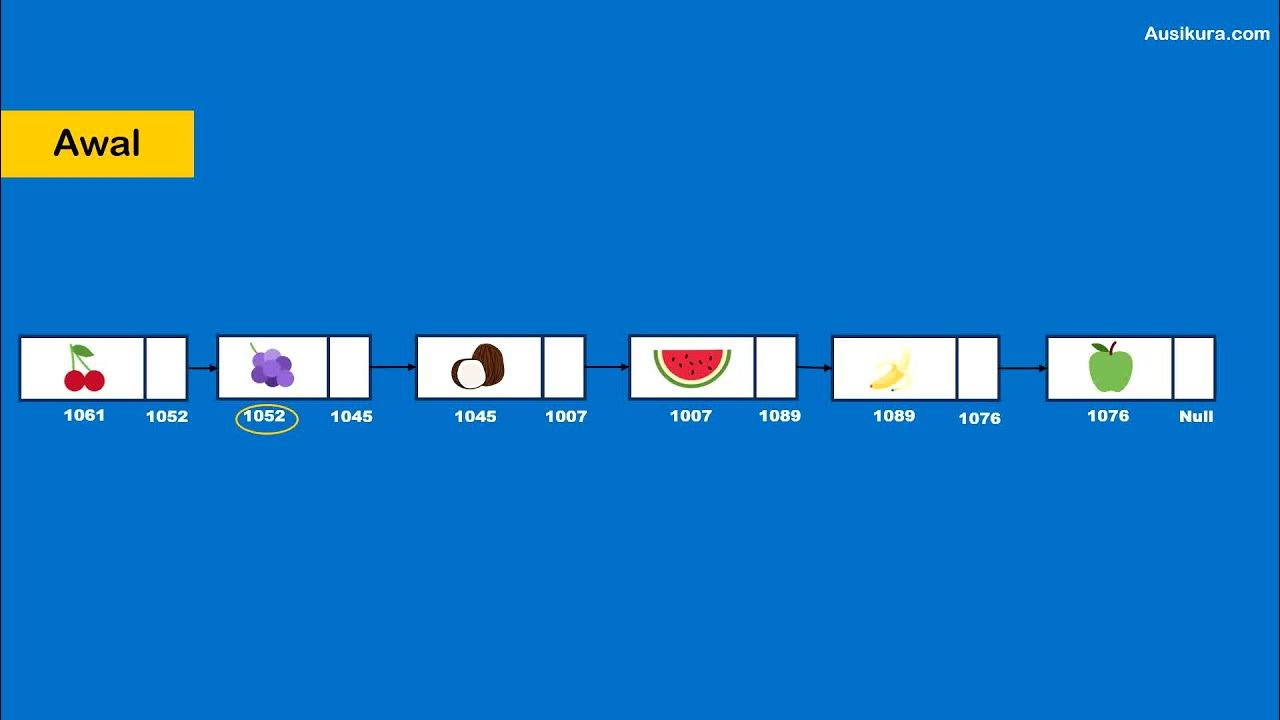Data Structures in Python: Doubly Linked Lists -- Delete Node
Summary
TLDRIn this video, the speaker demonstrates how to implement and test the delete operation in a doubly linked list. The process includes deleting the head node, handling attempts to delete non-existent elements, and performing sequential deletions to remove all nodes. The functionality is thoroughly tested, showing how the list updates after each operation, including edge cases like deleting an element that isn't present. The video concludes with an encouragement to check the provided GitHub code and a call for questions in the comments section.
Takeaways
- 😀 The script explains how to create a doubly linked list from scratch in Python.
- 😀 It provides a detailed walk-through on defining the `Node` class, which is a fundamental building block of the doubly linked list.
- 😀 A head pointer is used to keep track of the first element in the doubly linked list.
- 😀 The code demonstrates the importance of the `append` method to add elements to the list in the correct order.
- 😀 The script shows how the `delete` method works to remove elements from the list, highlighting its behavior on different types of nodes.
- 😀 It explains how to delete the head node, which is successfully removed in the test case, leaving the list with remaining nodes.
- 😀 The script demonstrates that the delete method gracefully handles attempts to delete non-existent nodes, leaving the list unchanged.
- 😀 After deleting nodes from the list (e.g., deleting node with value `4`), the script shows the resulting list, ensuring accuracy.
- 😀 The video emphasizes the ability to delete nodes and check the results, such as confirming the list is empty after all nodes are deleted.
- 😀 It concludes by thanking viewers, mentioning that the code is available on GitHub, and encouraging viewers to leave comments for any questions or feedback.
Q & A
What is the main purpose of the video?
-The main purpose of the video is to demonstrate how to implement and test the delete functionality in a doubly linked list data structure.
What happens when the delete operation is called on the head node (value 1)?
-When the delete operation is called on the head node (value 1), the node is removed, and the doubly linked list updates to contain only the elements 2, 3, and 4.
What happens when the delete operation is called on a node that is not present in the list (like value 6)?
-When the delete operation is called on a node that does not exist in the list (like value 6), the pointer traverses through the list, does not find the node, and returns the original list without modification.
What is the result after deleting the node with value 4?
-After deleting the node with value 4, the doubly linked list updates to contain only the elements 2 and 3.
What is the expected result after deleting nodes with values 3 and 2?
-After deleting both nodes with values 3 and 2, the list becomes empty, as no elements remain.
How does the delete operation handle the situation where there are no elements to delete?
-If the delete operation is called on a non-existent node, like value 6 in this case, the function simply returns the original list without any changes.
What happens when only one node (like value 3) is deleted, instead of deleting multiple nodes?
-When only one node (such as value 3) is deleted, the list still contains the remaining node, in this case, the element 2, as expected.
Why is it important to test deleting non-existent elements in the list?
-Testing the deletion of non-existent elements ensures that the delete function gracefully handles edge cases without causing errors or unwanted changes to the list structure.
What kind of data structure is being used in the video, and why is it useful?
-The video demonstrates the use of a doubly linked list, which is a data structure where each node points to both the previous and the next node. This makes operations like deletion and insertion at both ends more efficient compared to singly linked lists.
What can be inferred about the overall functionality of the doubly linked list after the demonstration?
-The doubly linked list implementation appears to be working as expected, with successful node deletions and correct list updates. It handles edge cases like deleting non-existent nodes and empty lists properly.
Outlines

This section is available to paid users only. Please upgrade to access this part.
Upgrade NowMindmap

This section is available to paid users only. Please upgrade to access this part.
Upgrade NowKeywords

This section is available to paid users only. Please upgrade to access this part.
Upgrade NowHighlights

This section is available to paid users only. Please upgrade to access this part.
Upgrade NowTranscripts

This section is available to paid users only. Please upgrade to access this part.
Upgrade NowBrowse More Related Video

Data Structures in Python: Doubly Linked Lists -- Append and Prepend

Data Structures in Python: Doubly Linked Lists -- Add Node Before/After

Introduction to Linked List

Pengenalan Linked List - struktur Data (Animasi)

10. INF-ED | Lista doblemente enlazada: explicación de la estructura de datos.

FLUTTER 21 Dismissible (Tutorial Flutter Bahasa Indonesia)
5.0 / 5 (0 votes)